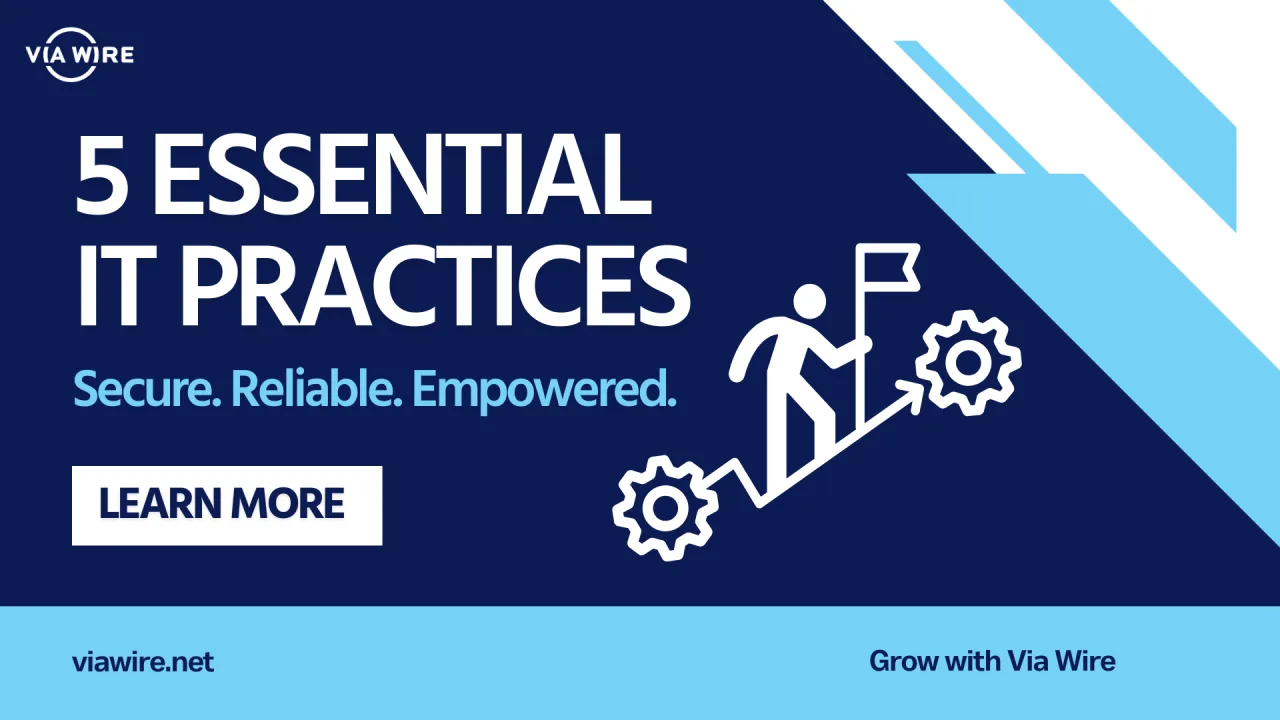As we head into 2025, the business landscape is more reliant on technology than ever before. From remote work to cloud services, digital transformation continues to reshape how companies operate. To stay competitive, it’s crucial for businesses to not only keep up with technological advancements but also to implement key IT practices that ensure security, efficiency, and scalability.
In this article, we’ll discuss five essential IT best practices that every business should follow to stay ahead in 2025.
1. Prioritise Cybersecurity
With the rise of cyberattacks, protecting your business from threats has never been more important. Cybersecurity isn’t just about defending your data; it’s about protecting your reputation, customer trust, and business continuity. In 2025, businesses must take proactive steps to strengthen their security infrastructure.
What to do:
- Implement firewalls and antivirus software to block malware.
- Use multi-factor authentication (MFA) to protect access to critical systems.
- Conduct regular security audits to identify vulnerabilities.
- Educate your team on spotting phishing emails and other common attacks.
The risk of a data breach is simply too great to ignore. A proactive approach to cybersecurity will safeguard your business from costly threats.
2. Invest in Regular Data Backups
Data loss can happen unexpectedly — whether from hardware failure, human error, or cyberattacks. Did you know that nearly 90% of businesses that experience a significant data breach or loss fail to recover within a year? Regular, automated backups are your safety net against these scenarios.
For businesses using tools like Microsoft 365, relying solely on cloud storage isn’t enough. While Microsoft’s cloud does provide storage, it’s important to have an additional backup system to fully protect critical business data.
What to do:
- Implement an automated cloud backup solution for all critical business data, including emails, files, and databases.
- Use versioning to keep multiple copies of files and quickly recover previous versions if needed.
- Test your backups regularly to ensure they are functioning correctly and can be restored quickly when required.
By having a solid backup strategy, you can avoid the devastating impact of lost data and maintain business continuity.
3. Embrace Cloud Solutions
The cloud offers businesses flexibility, scalability, and cost savings that are hard to beat. By moving to cloud-based services, businesses can access the latest software, store data securely, and collaborate seamlessly across teams, no matter where they’re located.
In 2025, it’s essential to incorporate cloud solutions for improved efficiency and accessibility.
What to do:
- Consider migrating to cloud-based productivity tools like Microsoft 365, Google Workspace, or Slack to improve collaboration and communication.
- Move data storage and applications to the cloud to ensure scalability and reliability.
- Integrate cloud-based tools with your existing systems for a more cohesive digital environment.
The cloud isn’t just for large enterprises; small and medium businesses can benefit from its scalability and security features as well.
4. Monitor Network Performance
Slow or unreliable network performance can severely impact productivity and customer satisfaction. In a world where online meetings, file sharing, and cloud-based tools are the norm, a stable and high-performing network is essential.
What to do:
- Implement network monitoring tools to track performance and resolve issues before they impact operations.
- Invest in leased lines or dedicated internet connections to ensure fast, stable, and uninterrupted service.
- Regularly test and upgrade your network infrastructure to keep pace with the increasing demands of business operations.
With a robust and reliable network, your team will have the speed and stability needed to work efficiently and deliver top-quality service to clients.
5. Stay Up-to-Date with Software
Outdated software is one of the biggest vulnerabilities for businesses in 2025. Cybercriminals often exploit known security flaws in older versions of software to gain access to systems and data. Regularly updating your software — whether operating systems, applications, or security patches — helps close these vulnerabilities and keeps your systems protected.
What to do:
- Set up automatic updates for operating systems and software applications to ensure you’re always running the latest version.
- Prioritise security patches and critical updates, as these often address vulnerabilities that can be exploited by hackers.
- Review your software subscriptions and renewals to ensure you’re using the most effective and secure tools for your business.
Keeping your software up to date is one of the simplest yet most powerful ways to protect your business from cyber threats and improve efficiency.
Conclusion
By following these IT best practices, businesses can ensure they’re prepared for the challenges of 2025 and beyond. From strengthening cybersecurity to leveraging the cloud, every decision you make today will shape your business’s ability to succeed in a digital-first world.
At Via Wire, we’re here to help you navigate the ever-changing IT landscape with tailored solutions and expert support. Whether it’s data backup, network optimisation, or cloud services, we’ve got the tools and knowledge to keep your business connected and secure.
Let’s work together to ensure your IT is set up for success in 2025!




0 Comments